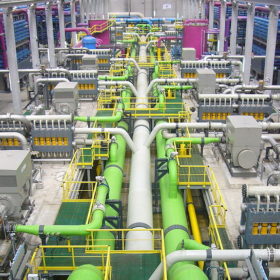
Scientists in France conducted an analysis on the competitiveness of water desalination, taking a large scale project planned for Morocco as a case study. The research concludes that PV without storage is the cheapest option to power desalinators, and will likely remain so until at least 2030.
Almost 97% of our planet’s water is found in oceans, yet desalinated saltwater accounts for only 1% of drinking water worldwide, according to the International Water Association. One reason for this has been the high energy requirements, and thus high cost, of desalination.
But improved technologies, as well as the need for water in arid regions, have led to increasing development of both thermal and renewables powered desalination. One of the largest projects announced to date is the Chtouka Ait Baha, planned in the Souss Massa region of Morocco. The plant will have a daily capacity to produce 275,000 cubic meters of water, which could be extended to 400,000 before 2030.
A group of scientists led by the French Alternative Energies and Atomic Energy Commission took the specifications from the Chtouka Ait Baha project as the basis for a case study comparing available technologies for desalination. The study compared photovoltaics, concentrating solar power (CSP), and desalination powered by a (mainly fossil fuel) grid, with further analysis on the possibility of integrating energy storage as well.
The study, Techno-economic assessment of solar energy coupling with large-scale desalination plant: The case of Morocco, published in the journal Desalination, concludes that today PV alone is the most cost-competitive way to power desalination, noting that in the Morocco case study CSP is held by back the need for a high voltage transmission line connecting the desert where the CSP can be built, to the coast where the saltwater is found.
The study took in a prospective analysis up to 2030, finding that PV would remain the most economical option to this point. But other options should not be excluded, the authors conclude – noting that scaling up desalination projects could make high voltage transmission lines viable and that CSP’s ability to store heat could add important flexibility. “Both PV and CSP technologies may be part of the game of RO desalination in a quite short future,” the paper states.
And for Morocco, the group concludes, the best path to ensuring water security would be to immediately launch a program of PV powered desalination projects, and begin preparing a CSP program for the future.
Lắp đặt điện mặt trời Khải Minh Tech
https://ift.tt/2X7bF6x
0906633505
info.khaiminhtech@gmail.com
80/39 Trần Quang Diệu, Phường 14, Quận 3
Lắp đặt điện mặt trời Khải Minh Tech
https://ift.tt/2ZH4TRU
Không có nhận xét nào:
Đăng nhận xét